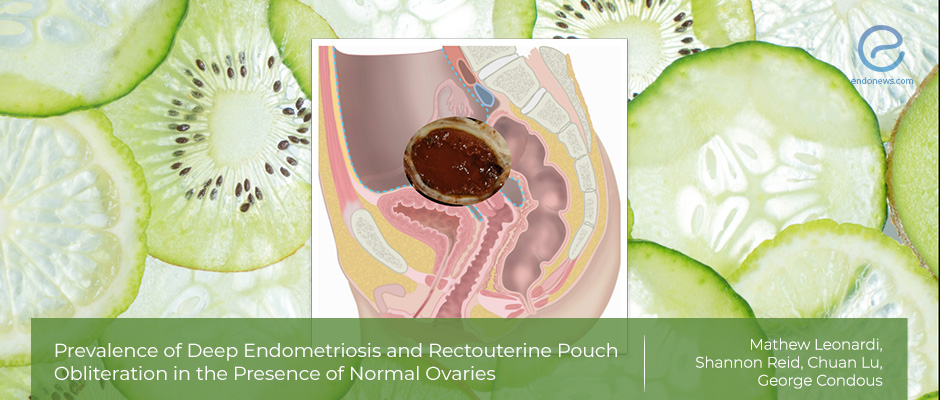Deep Endometriosis or Recto-uterine Obliteration Without Endometrioma
Sep 8, 2020
Careful examination of the rectal pouch during transvaginal ultrasonography is mandatory even if the ovaries are normal.
Key Points
Importance:
- There is a strong association between ovarian endometrioma and rectouterine pouch obliteration, and/or deeply infiltrating endometriosis.
Highlights:
- One in ten women with endometriosis without ovarian involvement could have rectouterine pouch obliteration.
- Clinicians should be alert for deep endometriosis even the ovaries are normal during transvaginal ultrasonography.
What's done here:
- This multicenter retrospective cohort study includes 411 patients detected by expert-guided TVS and then operated laparoscopically between 2009 and 2017 in Australia.
- Authors aimed to attract attention to findings of deep endometriosis and rectouterine pouch obliteration that are against expected during laparoscopy of patients with normal ovaries.
- The study confirmed the strong association between ovarian endometriosis and rectouterine obliteration/deep endometriosis.
- They demonstrated deep endometriosis 1/4 and rectouterine obliteration 1 in 10 patients without ovarian endometriosis.
- The rectum, rectosigmoid, and uterosacral ligaments were the most common site of deep endometriotic invasions in patients with normal ovaries.
Limitations:
- In this clinical study while the authors documenting the characteristics of patients any data indicated the stages of endometriosis that can laparoscopically be defined by the surgeon.
Lay Summary
The diagnostic help of ultrasound is increasing by its ability to diagnose deep infiltrating and rectouterine pouch obliteration in patients who are suffering from chronic pelvic pain.
Clinicians are used to evaluating the rectal and parametrial areas of the endometriotic women by transvaginal ultrasound cautiously when they primarily diagnose ovarian endometrioma. This habit could be changed if the notification can be made that there could be rectal pouch obliteration and deep invasion of endometriosis even the patient has normal ovaries.
Leonardi et al. from Sydney Medical School Napean, University of Sydney, Australia, aimed to determine the prevalence of deep endometriosis and rectouterine pouch obliteration in the presence of normal ovaries and conducted a retrospective cohort study between January 2009 to December 2017 using a prospective multicentre data registry.
The study includes 410 patients with diagnosed endometriosis while 319 patients have ovaries that are not affected by endometriosis. The authors found the prevalence of deep infiltrating endometriosis and rectouterine pouch obliteration 25.4% and 9.7% respectively while the most common site for deep endometriosis was uterosacral ligaments.
According to their findings patients who had signs and symptoms of endometriosis but normal ovaries showed deep infiltrating endometriosis in a ratio of 1 to 4 when they examined by tertiary center ultrasonography.
The authors recommend to be more attentive to examine the rectal pouch when ovaries appear normal, just not be missed isolated deep infiltrating endometriosis and rectouterine pouch obliteration during a routine transvaginal ultrasound examination.
This interesting paper was recently published in the "Journal of Obstetrics and Gynaecology Canada".
Research Source: https://pubmed.ncbi.nlm.nih.gov/32682707
rectouterine pouch obliteration laparoscopy dysmenorrhea deep infiltrating endometriosis endometrioma prevalance stage

